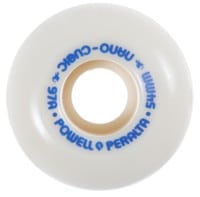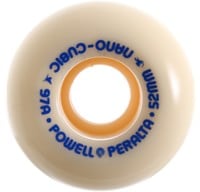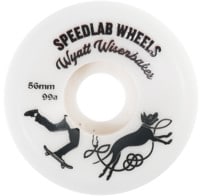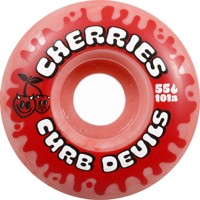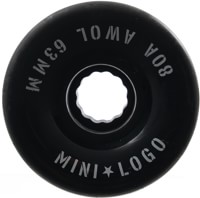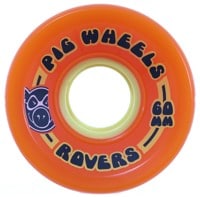Science Vs. Skateboarding: What's The Best Mid-Soft Skateboard Wheel?
The precedent for skateboard wheels has been: "If you want to do tricks, skate hard wheels. If you want to cruise and ride for transportation, skate soft wheels." This is because hard wheels are more slippery which makes it easier to do technical tricks on ledges, rails, flat ground and so forth. The issue with that precedent is that many of the skate spots you find out in the streets are very rough and terrible to ride on with hard wheels. To combat the ever eroding concrete, wheel companies have been creating mid-soft wheel formulas that try to give you the best of both worlds: A wheel that rolls smoothly over rough pavement, AND is slippery for technical skating.
Our skate nerd instincts kicked in again and we delved into some more DIY "Science" and conducted a few experiments comparing some of the most popular mid-soft wheels. Watch the video above or keep reading for the results!
Who Are The Contenders?
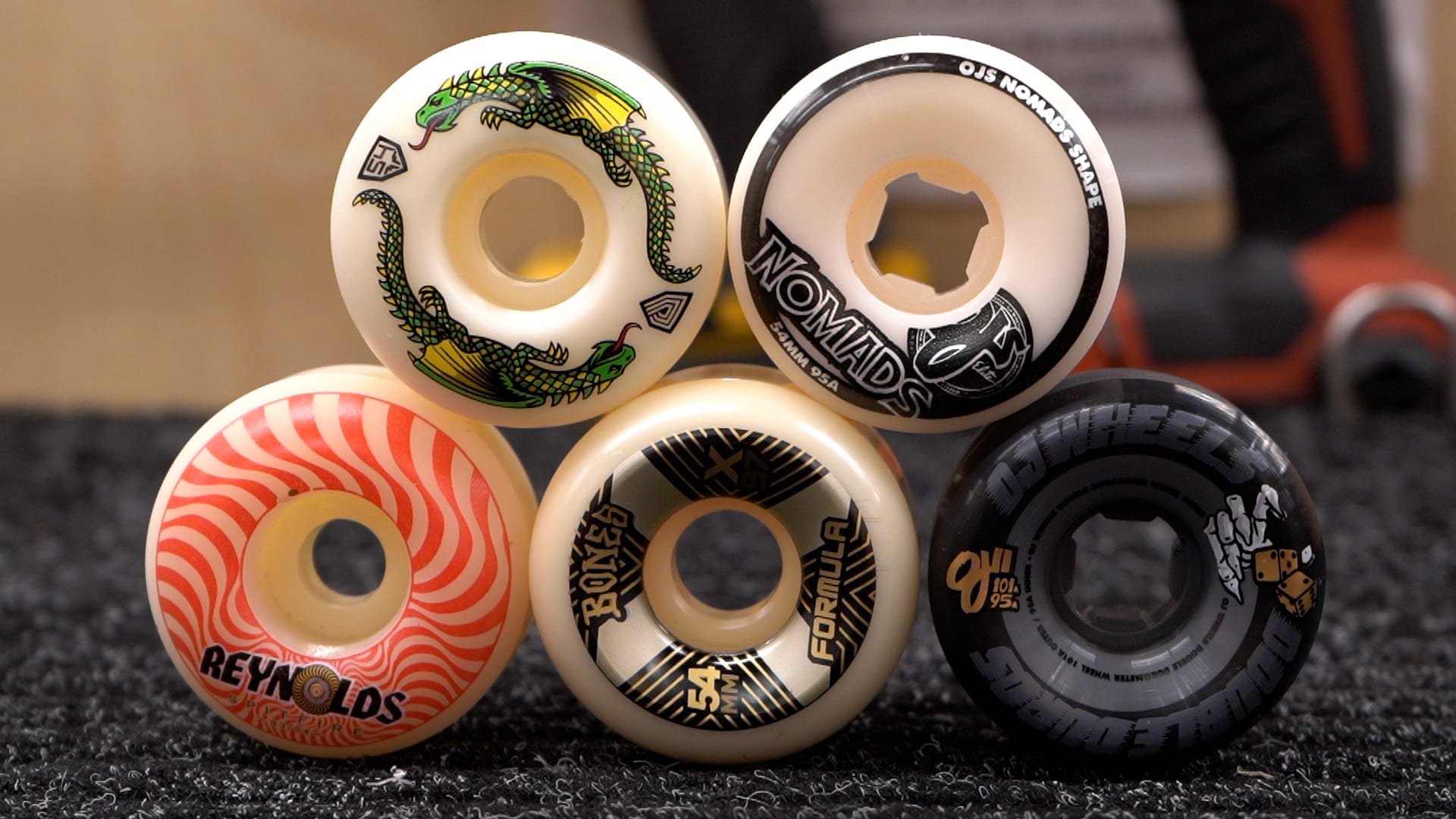
We compared five different mid-soft wheels that all claim that they can roll smoothly over rough ground, but also can slide for tricks. They were:
- Spitfire Formula 4 (93d)
- Bones X-Formula (97a)
- Powell Dragon Formula (93a)
- OJ Nomads (95a),
- OJ Double Duro (95a/101a). The OJ Double Duro's are unique because they have a softer inner core that's 95a and a 101a outer shell so you still have that hard wheel feeling.
For a fair assessment, we used the same diameter (54mm) for each wheel.
Test #1: Vibration Test

For the first experiment, we utilized the accelerometer on a phone and measured the intensity of the vibrations of the board as it rolled over a patch of rough sidewalk and compared the measurements between the different wheels. We started with a traditional hard 101a wheel and a soft 78a cruiser wheel to get the extremes and then tried the mid-soft wheels to see how they compared. We did each vibration test multiple times to ensure we got consistent readings and then averaged them out.
After conducting the vibration tests, the results were exactly as you would have predicted. The soft 78a wheels had the smoothest ride, the hard 101a wheels were the roughest, and all of the mid-soft wheel readings fell between those extremes. This chart shows the wheels in order from smoothest to roughest.

Test #2: Skate Test
For the next test, I skated each set of wheels for a while and gave an assessment on how well they slid. Since it's more subjective, I gave the wheels star ratings between 1-5 to grade how well they slid for various tricks like nose and tail slides, reverts, flat ground, blunt slides, etc.
- Spitfire Formula 4 (93d) - I was surprised by how well these slid considering they're 93a. Not as well as a normal hard wheel, but still decent. I was able to do nose and tail slides and initiate powerslides relatively easily.
- Bones X-Formula (97a) - These were a bit sticky for certain grinds like crooks and smiths on ledges, but with some extra wax I was able to get them to slide. They were very smooth and quiet but I could still break traction for flatground tricks and powerslides easily.
- Powell Dragon Formula (93a) - I had some difficulties getting these to slide like I wanted. I had to use extra wax and then I was able to get them to slide. They worked fine for flat ground and other pivot style tricks and initiating powerslides wasn't too difficult.
- OJ Nomads (95a) - These were fairly grippy but they were able to break traction relatively easily for powerslides and pivot type tricks and didn't stick too badly on nose and tail slides. I did have to make sure the ledges had plenty of wax on them though.
- OJ Double Duros (95/101a) - Even with the harder outer shell, they still felt more grippy than a traditional hard wheel. They still slid well for nose and tail slides and broke traction easily for flatground flip tricks and powerslides. They still had that kind of muffled sound like a cruiser wheel, but when you did a powerslide it screeched more like a hard wheel.

Not surprisingly, If we compare the assessments of the slide-ability of the wheels against the smoothness of ride, there is an opposite correlation. The smoother the wheels ride, the less they slide.
Test #3: Powerslide Test

The last test we did was a downhill powerslide test to see how well they could slide downhill and to also test how well they resisted getting flat spots. We put a chalk line up the hill for the starting position, then put a second chalk line 80ft downhill to signify where to start powersliding. This gave each wheel the same amount of downhill acceleration so we could fairly assess the slides. We powerslid each wheel 3 times and then averaged the results. Of course there were some factors that could have affected the outcomes, such as the differences in the shapes and contact patches of the wheels, as well as the temperature and slight inconsistencies of the asphalt, and so on. But hey, that's why we put the "Science" in quotation marks!

Above is the averaged results from the powerslides. Interestingly, the performance of the wheels in the powerslide test did not directly correlate with my observations from skating the wheels. From my previous assessments, the harder wheels should have slid better than the soft wheels. But that was not the case. The Bones X-Formula and Powell Dragon Formula wheels out-slid the OJs by a large margin. It seems like the X and Dragon wheels are formulated more like longboard wheels that are designed to be grippy, but then slide buttery and smooth once the traction is broken.

Test #4: Flatspot Test

After sliding them down the hill, we inspected them for damage and visible flatspots. Some of them had tiny chunks missing, tiny gashes, and minor flatspots, but they all held up pretty well. We took them to the smooth ground at Washington Jefferson Skatepark in Eugene and rode around on the wheels to feel if there were any vibrations caused from flatspots.
- Spitfire Formula 4 (93d) - I didn't feel any vibrations from flatspots, but there were a few visible small chunks missing for the lip of the wheels.
- Bones X-Formula (97a) - These had very minimal vibrations. I didn't see any actual flat spots, but there were visible gashes and a small chunk missing from one of the wheels.
- Powell Dragon Formula (93a) - These wheels had no chunks missing but there was one noticeable flatspot on one of the wheels. It was very subtle though, not enough to be bothersome.
- OJ Nomads (95a) - These wheels feld the same as they did before and had no noticeable flatspots or chunks missing.
- OJ Double Duros (95/101a) - These had the most flatspot vibrations. One of them was clearly visible but not big enough to be distracting or even be noticeable if you were outside the skatepark.
So what's the verdict?

I think all of these wheels have their place. They each definitely made for a smoother ride over traditional hard wheels and all of them were able to slide decent enough for technical skating.
The Spitfire Formula 4 93d's were the best overall wheel that performed well in each test.
My recommendations would be that the Powell Dragon & Bones X formula wheels are great for transportation and you'll still be able to do some technical skating for when you come across a spot. They would also be ideal for those super slippery indoor skateparks where you actually want a little more traction.
The OJ Nomads and the Double Duros are more suited for regular skating rather than transportation, but will help you roll through crusty spots that would be difficult to skate with regular hard wheels.Ultimately it boils down to your personal preferences and needs in a skate wheel. So take this info and make an informed decision next time you get some new wheels.
WANT TO SHOP ALL WHEELS?
EXPLORE BELOW


